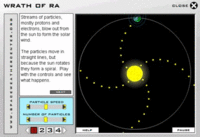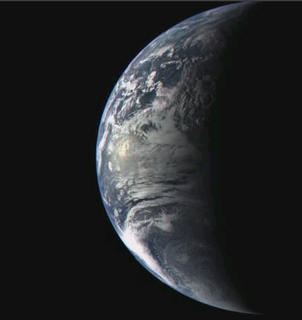
. . . as the late Mr. Cousteau would say.
Those who know me well may recall a time when I was obsessed with sharks, dolphins, and the rest of the underwater world. It peaked when I was in Junior High, so around ages 11 to 13. When I was much younger, as soon as I was able to think about what an astronaut was, I wanted to be one. The idea of exploring the universe, and helping to expand humanity outward into the unknown was exciting to me. In 1986, the space shuttle Challenger exploded, and America's manned space program did a nose dive in terms of popularity and public confidence. As a six year old, my interest turned to frontiers of exploration that didn't involve the risk of dying in a ball of fire. I decided I wanted to be an Oceanographer. Like many children, I was interested in dolphins because I had heard they had intelligence that was comparable to our own, and because they were cute enough to be considered non-threatening and friendly. Perhaps unlike many children, I was also very interested in sharks.
If dolphins could be thought of as the friendly guides and helpers of the undersea world, then sharks fit the profile as villains. But they also had a mystery to them that attracted my interest. I used every opportunity to learn more about them, use them as a subject of a report in school, read every caption in the shark encounter at sea world, etc. I learned all about how sharks had been given a bad reputation in the public mind by movies like Jaws and by general ignorance and common misconceptions. They are wild animals, of course, and have the physical ability to overpower and kill humans. But so do many other life forms in nature. Why are sharks regarded with even more fear than other animals that cause more human injuries and deaths per unit time than sharks?
I think part of it is because the ocean is a place where we humans are out of our element. If you think about it, exploring the ocean really is like exploring a different world. The simple fact that the ocean's fluid (liquid water) is much more dense than the atmosphere's fluid (air) means that more life forms in the ocean can move in 3 dimensions (east-west, north-south, and up-down) than can easily do so on land. Shark's have had their physical form perfected by 300 million years of natural selection, and so can move much more efficiently underwater than humans can.
The first time I went Scuba diving, I knew it was something I was going to love. It literally exposes you to an entirely different world; one where you are free to move in all three dimensions. When you're diving, you can fly, move upside down, levitate, and move in pretty much any way you can think of.
While pusuing space science as a career, I've finally found a sustainable way to pursue diving/oceanography as a hobby. I've recently qualified as a volunteer diver at the Long Beach Aquarium of the Pacific. As a lowly exhibit diver, I enter the larger exhibits (Blue Cavern, a Baja California Pacific exhibit, and Tropical Lagoon, an exhibit with creatures found in tropical waters) to feed the fish and clean the false coral. On my second shift, I was told it was time I learn to feed "the puppies". To my diving teammates, "the puppies" are the leopard sharks.
Now, leopard sharks are certainly nothing to fear. They don't really have teeth, per se. They usually just inhale their food like a ray does. They can be found at petting pools with bat rays and sting rays, where people can pet them without fear of being bitten. All the same, I had been told that the Aquarium's leopard sharks could be fairly aggressive at feeding time. People had been known to have their fingers nibbled while feeding a shark, or having them caught in the shark's mouth when it sucks in a piece of squid or a sardine, with the shark shaking its head like a terrier. Again, they don't have teeth like a great white shark's, so the key is to remain calm and just wait till the "puppy" lets go. The worst it could do was do give you a hickey (as had happened to other divers in the past) or a bruise. Still, there is a stigma about sharks in general, and several divers are simply unwilling to feed them, opting for other assignments instead.
So with a thorough briefing from an experienced diver, I entered the Blue Cavern exhibit with my bucket of sardines and squid, and dropped to my knees on the cobblestone bottom, about 28 feet below the surface. The puppies found me immediately, and knew it was time to be fed. They did all they could to try and get into the bucket, whose contents were protected by a neoprene cover. The other fish in the exhibit (sheepheads, barracuda, yellowtail, sea bass) were also very interested, and swarmed around me as well. It was all I could do to make sure that the leopard sharks got the sardines and squid instead of all the other fish. The leopard sharks were fun, though. They came up from underneath, down over my shoulder, through my Scuba hoses. . . One almost knocked my mask off my face! I reminded myself that they could do me no real harm, and did my best to give them their lunch. A few of the morsels were snatched by other fish, but on the whole the leopard sharks ate pretty well, and I was none the worse for wear. After I was out of food, I spent the remainder of my dive blowing bubbles and doing underwater acrobatics for the children watching from the other side of the glass. They waved and giggled. Perhaps some of them are future oceanographers.
It's funny how the different things we do in life fulfill us in different ways. In my involvement in space studies, I have been fulfilling one of my interests in exploration, but I have often felt the lack of fulfillment for that part of me that wants to be an oceanographer; to be embraced by nature. Though it may seem strange, being surrounded by 3 or 4 leopard sharks all trying to be fed certainly felt like being embraced by nature. Maybe the draw of this is much simpler. Maybe it's just the thrill of trying something new. Variety is the spice of life, and hopefully the resulting flavor is happiness.


